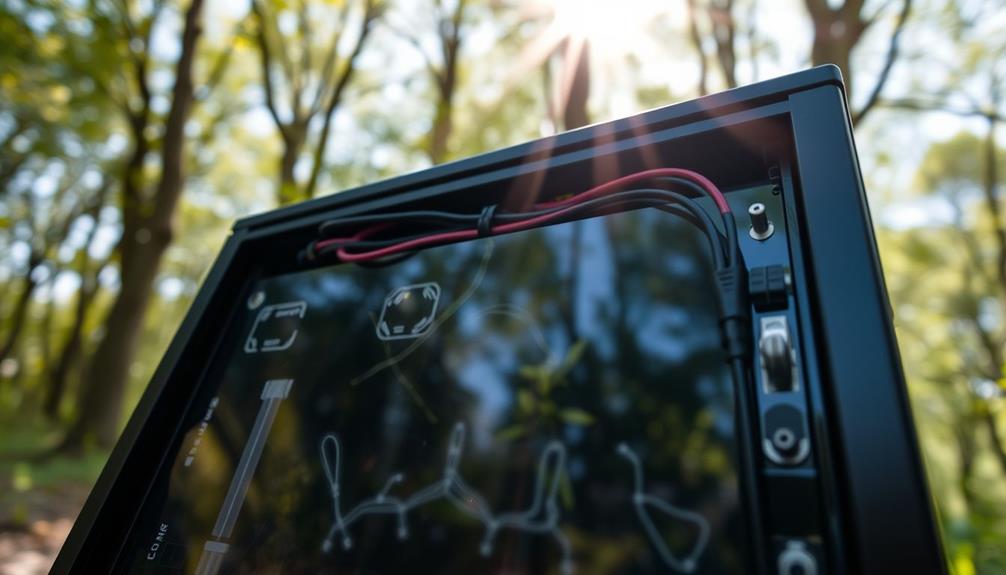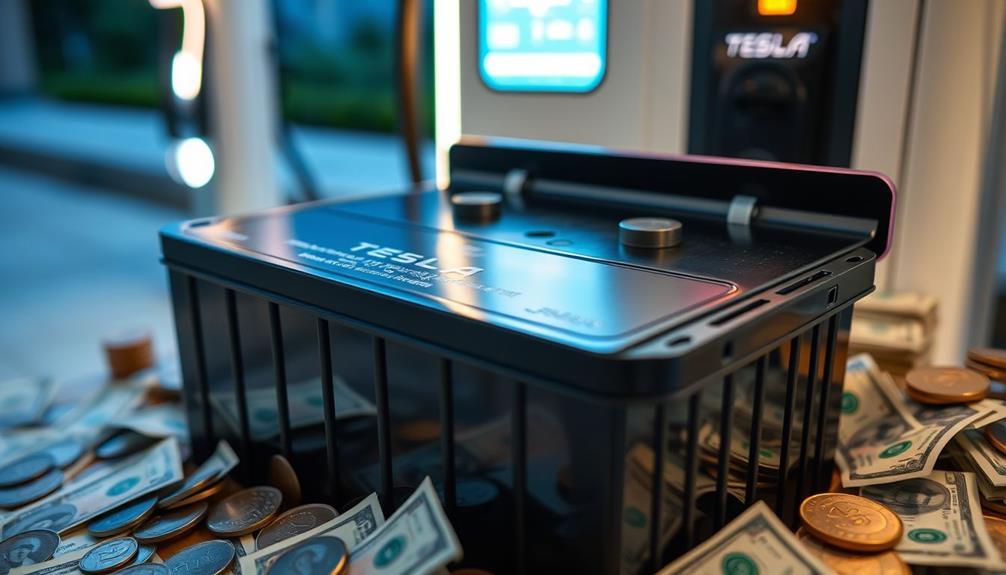Tesla batteries typically last between 300,000 and 500,000 miles, translating to about 10 to 20 years of use. Most drivers can expect only about 1% annual degradation, with many batteries still functioning after one million miles. You'll find that proper care, like maintaining a charge between 20% and 90% and avoiding frequent fast charging, can extend battery life. Also, extreme temperatures and aggressive driving can affect performance. With an 8-year warranty covering 70% capacity retention, you're covered for a significant time. There's much more to explore about maintaining peak performance, so keep going!
Key Takeaways
- Tesla batteries have an expected lifespan of 300,000 to 500,000 miles, lasting 10 to 20 years with proper care.
- Most Tesla batteries experience an average degradation of only 1% per year, retaining about 90% capacity after 200,000 miles.
- Charging habits significantly impact battery longevity; it's best to maintain a charge between 20% and 90% to reduce strain.
- Environmental factors, such as extreme heat and cold, can affect battery performance and lifespan.
- Tesla offers an 8-year warranty guaranteeing at least 70% capacity retention, with replacement costs ranging from $5,000 to $30,000.
Tesla Battery Lifespan Overview
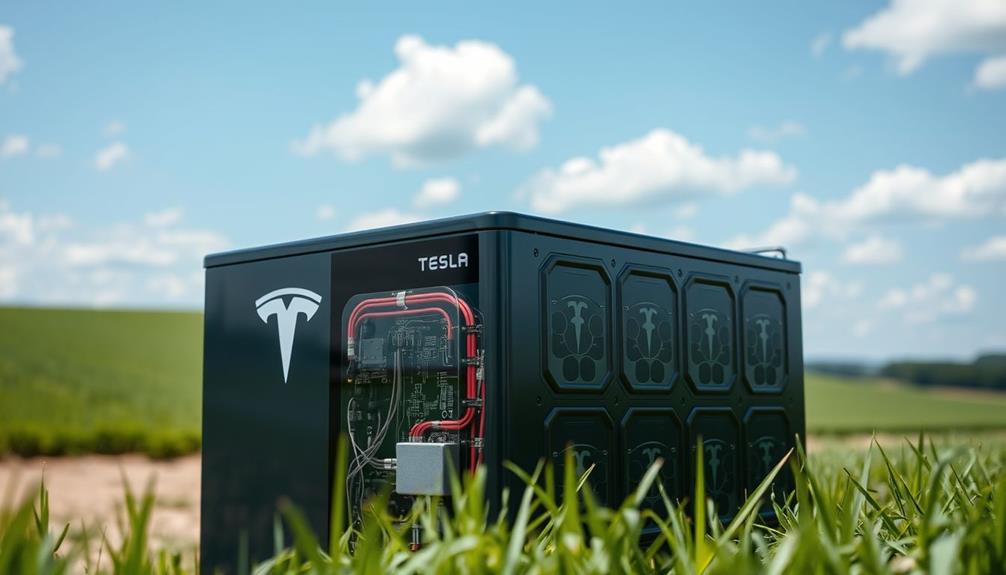
How long can you expect a Tesla battery to last? Generally, you can count on Tesla batteries to last between 300,000 and 500,000 miles, which translates to about 10 to 20 years of normal use.
Most models come with an 8-year warranty covering 100,000 to 150,000 miles, ensuring that the battery retains at least 70% of its original capacity during this timeframe.
Battery degradation averages about 1% per year, meaning you'll notice significant performance even after your Tesla hits 200,000 miles. With proper care and smart charging habits, real-world data shows that some Tesla batteries can exceed a million miles.
Take, for example, a 2013 Model S P85 that maintained strong performance throughout its life.
Keep in mind that while Tesla batteries are designed for longevity, various factors, including your driving habits and environmental conditions, can impact their lifespan.
Factors Impacting Battery Longevity
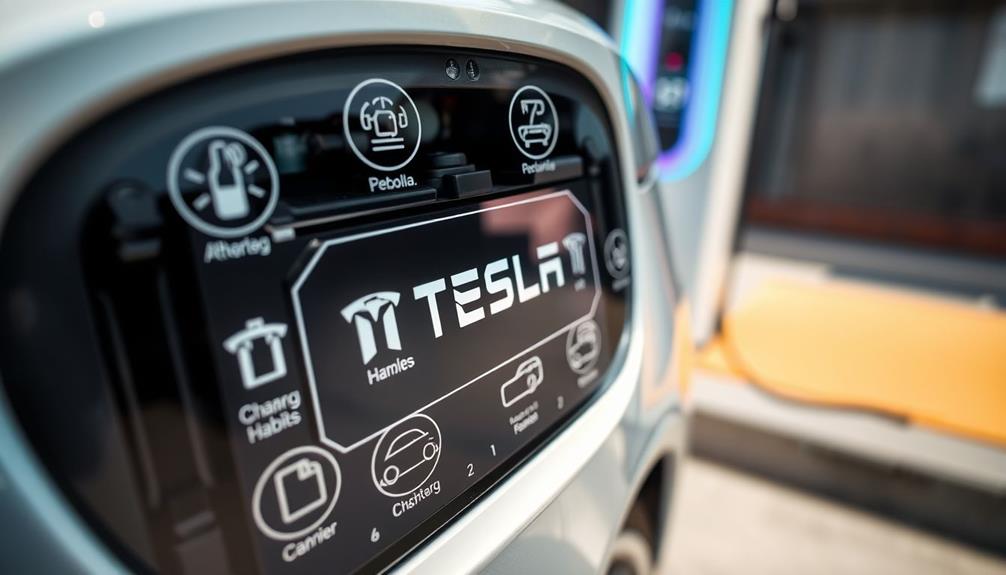
Several key factors can greatly impact the longevity of your Tesla battery.
First, your charging habits play an essential role in determining battery lifespan. It's best to maintain your battery charge between 20% and 90% to minimize strain and reduce battery degradation.
Also, consider your driving style; aggressive driving can lead to quicker battery wear, while smooth and efficient driving enhances battery efficiency.
Temperature effects are another significant factor. Extreme heat can severely impact battery performance and longevity, so be mindful of how often you expose your Tesla to high temperatures.
Additionally, frequent fast charging, like using Superchargers, can cause overheating and accelerate battery degradation. To promote better battery management, try using lower voltage chargers more regularly.
Charging Options for Tesla Vehicles
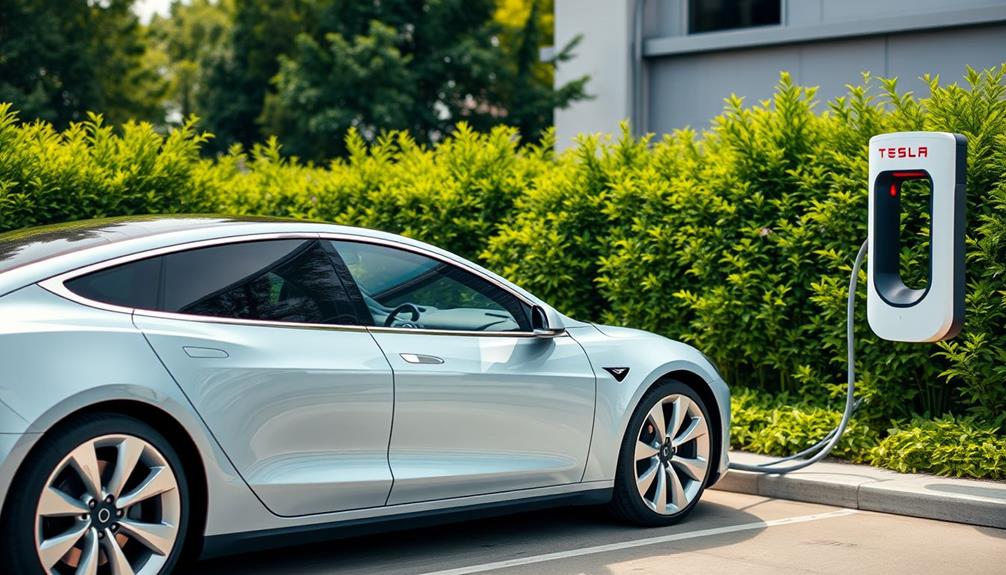
When it comes to charging your Tesla, you have a variety of options that can fit your lifestyle and needs. You can use a Mobile Connector with a standard 120V outlet for home charging, but for ideal charging speeds, a Tesla Wall Connector with a 240V outlet is recommended. This setup allows you to recharge your vehicle efficiently overnight.
For public charging, Tesla Superchargers are your best bet. They provide the quickest charging times, often allowing a full charge in about 30 minutes. Additionally, you'll find Tesla Destination chargers at various venues for convenient top-ups during your outings.
Here's a quick comparison of your charging options:
| Charging Option | Charging Speed |
|---|---|
| Mobile Connector (120V) | Slow (3-5 miles/hour) |
| Tesla Wall Connector (240V) | Moderate (30 miles/hour) |
| Level 2 Chargers | Fast (10-30 miles/hour) |
| Tesla Superchargers | Very Fast (160 miles/30 min) |
| Tesla Destination Chargers | Moderate (up to 30 miles/hour) |
Warranty and Replacement Costs
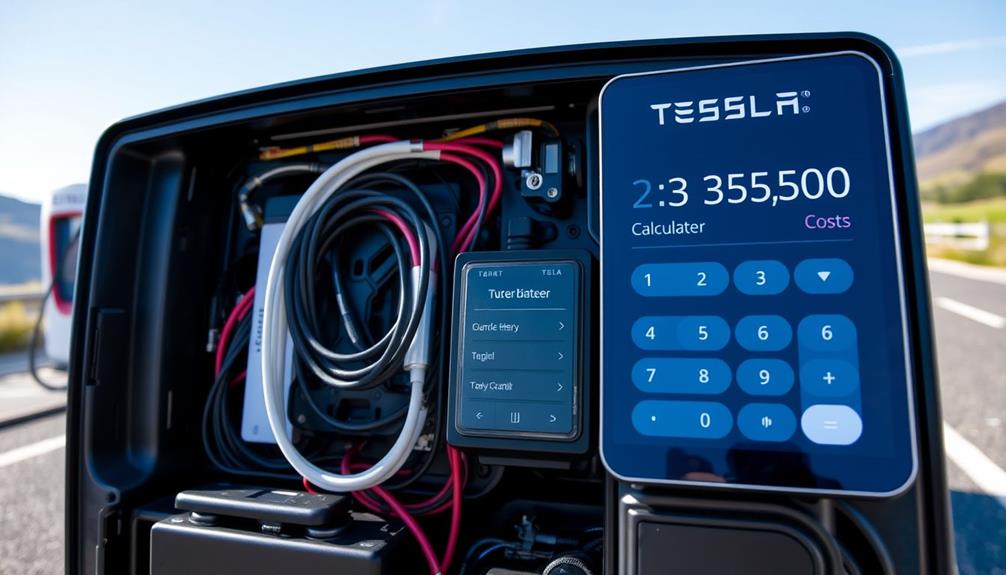
When you own a Tesla, understanding the warranty coverage for your battery is essential.
Tesla provides an 8-year warranty that varies by model, ensuring your battery retains at least 70% capacity during that time.
However, if you ever need a replacement, costs can range considerably, so it's important to know what to expect.
Warranty Coverage Details
Tesla's battery warranty coverage is designed to give you peace of mind, as it generally lasts for eight years across most models. This battery warranty guarantees that your battery retains at least 70% of its original capacity during the coverage period.
Depending on the specific Tesla model, mileage caps range from 100,000 to 150,000 miles, adding an extra layer of reassurance for your investment. This flexibility ensures that buyers can select a warranty that aligns with their expected usage and driving habits. Additionally, the impressive Tesla full charge range allows drivers to cover substantial distances on a single charge, further enhancing the practicality of ownership. Combined with the durability of Tesla’s battery technology, these factors make Tesla vehicles a compelling choice for those seeking sustainability without compromising convenience.
However, keep in mind that replacement costs can be significant. If your battery needs replacing after the warranty expires, you could face costs anywhere from $5,000 to $30,000, depending on the model and battery specifications.
Elon Musk has suggested that module replacement costs could average between $5,000 and $7,000, which is a vital factor to take into account.
Fortunately, if you're looking to minimize expenses, remanufactured battery packs are available. These options can help lower replacement costs while providing a reliable solution, as they undergo rigorous testing before installation.
Understanding the warranty coverage details helps you make informed decisions about your Tesla ownership experience.
Replacement Cost Estimates
Estimating battery replacement costs is essential for Tesla owners, as they can greatly impact your long-term expenses. The battery replacement cost varies considerably depending on your model.
For instance, a Model 3 may cost around $10,000 to replace, while you could be looking at $20,000 for the Model S or Model X. Tesla's standard warranty lasts 8 years or between 100,000 to 150,000 miles, covering batteries that retain at least 70% of their original capacity during this period.
Once the warranty expires, you may face skyrocketing ownership expenses, with total replacement costs potentially reaching $20,000 to $30,000 for complete battery packs.
However, there are options available to help mitigate these expenses. Remanufactured battery packs could offer a more affordable alternative to new replacements, allowing you to manage costs without sacrificing performance.
Factors Influencing Replacement Timing
Throughout your ownership of a Tesla, understanding the factors that influence battery replacement timing is essential for managing costs effectively. Knowing how these elements interact can help you maximize your Tesla battery lifespan while minimizing replacement costs.
Here are three key factors to take into account:
- Charging Habits: Frequent fast charging can accelerate battery degradation. If you favor overnight charging at lower speeds, you'll likely see better capacity retention over time.
- Driving Style: Aggressive acceleration and high-speed driving can stress the battery, leading to quicker degradation. Adopting a smoother driving style may extend your battery's life, potentially delaying replacement.
- Environmental Conditions: Extreme temperatures can impact battery performance. Keeping your Tesla in a climate-controlled environment can help maintain maximum battery health.
Real-World Battery Performance
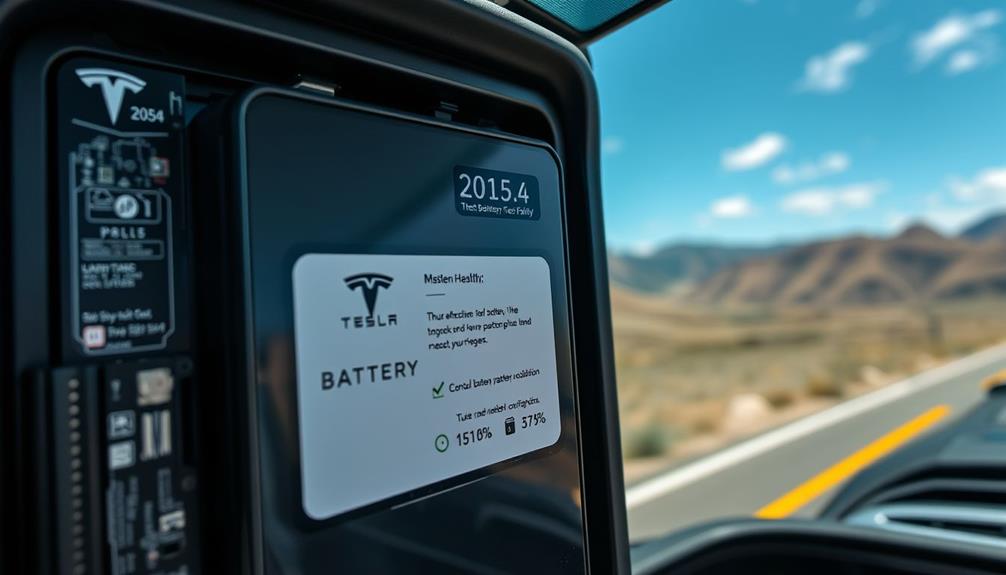
When you look at real-world examples, Tesla batteries often exceed expectations, with some vehicles reaching over a million miles on the original battery.
However, factors like your driving habits and charging routines can greatly impact performance and longevity.
Understanding these elements will help you maximize your battery's lifespan.
Real-World Longevity Examples
Tesla batteries have proven their durability in real-world conditions, showcasing impressive longevity that often exceeds expectations. Real-world data shows that many Tesla owners experience remarkable battery performance, with some models like the Model S retaining about 90% capacity even after 200,000 miles.
Here are three longevity examples to illustrate this:
- A 2013 Model S P85 owner drove over one million miles on the original battery, only replacing it after 180,000 miles.
- The Model 3 and Model Y batteries are estimated to last around 1,500 charging cycles, equating to about 300,000 miles under typical driving conditions.
- Battery degradation generally occurs at a rate of 5% per 100,000 miles, meaning you can expect minimal performance loss during the initial years of use.
With such impressive capacity retention, it's clear that Tesla's battery lifespan often outperforms industry standards.
Under ideal conditions, you could expect your battery to retain around 80-90% of its original capacity after 10 years, making these vehicles a smart choice for long-term ownership.
Factors Impacting Performance
How do various factors influence the real-world performance of Tesla batteries?
The Tesla battery lifespan can be greatly affected by your driving habits, with aggressive acceleration and braking leading to quicker battery degradation. If you drive smoothly, you can help extend battery efficiency and range.
Extreme temperatures also play a critical role. In cold weather, you might notice your battery range drop by up to 40%, which can be frustrating during winter months. On the other hand, high temperatures can also cause stress on the battery, impacting its longevity.
Terrain is another factor to take into account. If you frequently drive in hilly or mountainous areas, your battery will require more energy, resulting in reduced performance and range.
Lastly, don't underestimate the importance of software updates. Tesla regularly releases updates designed to optimize battery performance, which can help mitigate some of the effects of battery degradation over time.
Tips for Extending Battery Life
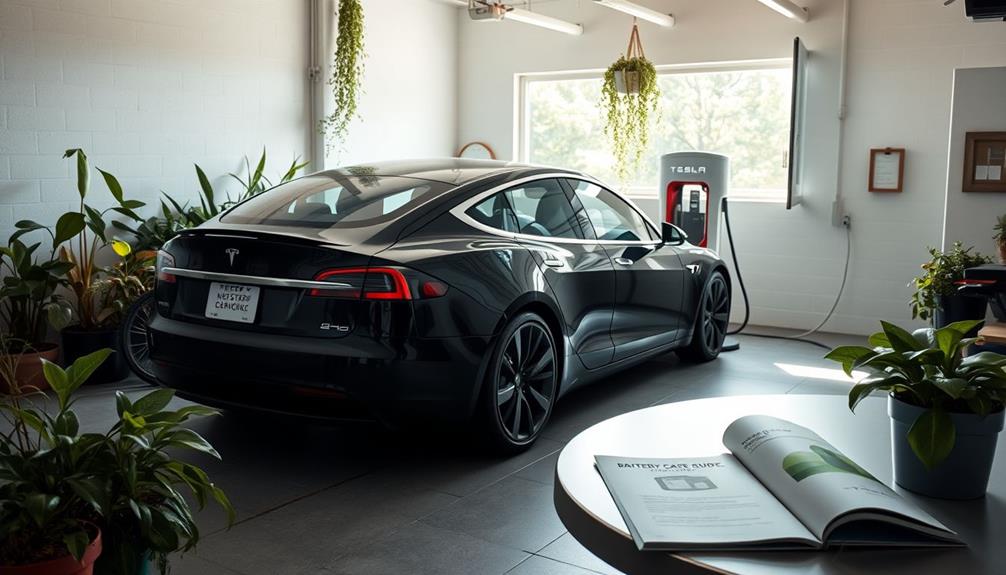
Many owners find that extending their Tesla battery life is easier with a few simple practices. By adjusting your charging habits and driving style, you can considerably extend your battery's lifespan.
Here are three key tips:
- Charge Smartly: Keep your battery charge between 20% and 90%. This minimizes strain and helps avoid battery degradation. Using a Tesla Wall Connector at home offers a stable charging environment for ideal charging.
- Limit Supercharger Use: While Superchargers are convenient for long-distance travel, frequent use can expose your battery to heat, accelerating degradation. Save them for those rare trips when you really need them.
- Stay Updated: Regularly update your vehicle's software. These updates often include enhancements that can improve battery performance and longevity.
Lastly, adopt ideal driving habits. Smooth acceleration and deceleration not only improve efficiency but also reduce battery wear.
Frequently Asked Questions
How Long Do Tesla Batteries Actually Last?
When considering how long Tesla batteries actually last, you'll find they typically endure 10 to 20 years. With proper care, you can maximize their lifespan, enjoying reliable performance and extensive mileage throughout the years.
How Much Does It Cost to Replace a Tesla Battery?
Replacing a Tesla battery can cost you between $5,000 to $30,000, depending on the model. If you're under warranty, you might save considerably, as Tesla covers replacements if capacity drops below 70%.
What Is the Average Battery Degradation of a Tesla?
When you consider Tesla battery degradation, you'll find it typically loses about 5% in the first few years, then around 1% annually. Most batteries retain about 90% capacity after 200,000 miles, showcasing impressive durability.
What Is the Life Expectancy of the Tesla Y Battery?
Did you know Tesla Model Y batteries can last up to 500,000 miles? Generally, you can expect it to last around 10 to 15 years, depending on your driving habits and maintenance practices.
Conclusion
To sum up, understanding your Tesla's battery lifespan can really enhance your driving experience. Did you know that Tesla batteries can last over 300,000 miles with proper care? By considering factors like charging habits and temperature, you can maximize this impressive longevity. Plus, following simple tips can help extend your battery life even further. Embracing these insights not only saves you money but also contributes to a more sustainable future. So, keep your Tesla battery healthy and enjoy the ride!
